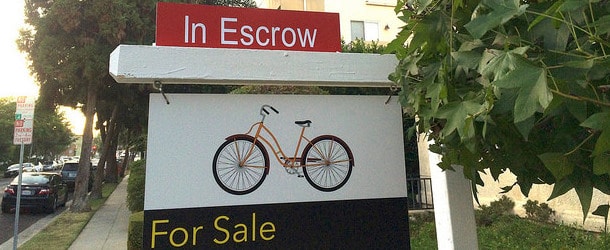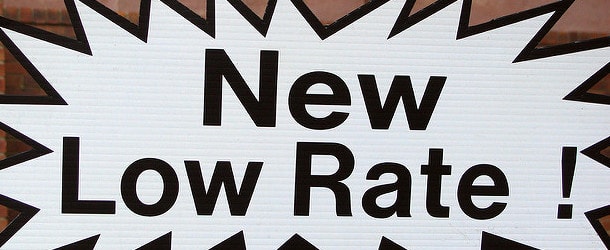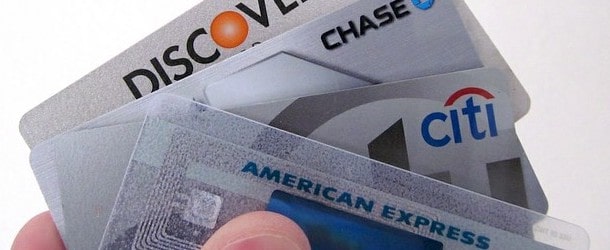
With mortgage rates approaching all-time lows once again, there might be the temptation to snag a 30-year fixed at say 2.875%, or 2.99% if a lender offers a promotional rate.
The same might be true of any home loan product, whether it’s a 5/1 ARM or 15-year fixed.
But here’s the thing – a rate just below a key threshold may cost a lot more, and not actually deliver the savings you’re looking for.
A 2.99% 30-Year Fixed Sounds Awesome, Doesn’t It?
This week, the 30-year fixed dipped to 3.51%, per the latest Freddie Mac survey. And it doesn’t appear to be going up anytime soon.
As it stands, we’re only 20 basis points away from matching the all-time low set back in November 2012.
Meanwhile, rates on the 15-year fixed mortgage are less than 50 basis points off the record low of 2.56%.
Because we’re so close to some big psychological thresholds, mortgage lenders might start offering rates below these key levels to entice borrowers.
Really, a lender could just start advertising a 2.99% 30-year fixed and they’d probably make headlines. It’s essentially free PR.
But once you dig into the details, you might be disappointed in what you find.
Read the Fine Print on That Super Low Mortgage Rate
A while back, I wrote that you should watch out for low mortgage rates you have to pay for.
In short, lenders can advertise below-market rates if they tack on discount points to the deal.
But in reality, this just means you’re buying down your interest rate, paying interest upfront as opposed to monthly over the course of the loan term.
So a lender might say sure, I’ll give you a 30-year fixed at 2.875%, but the closing costs are going to be astronomical.
Once you factor in the two discount points you have to pay, the rate might not appear all that attractive.
Especially if they’re offering a rate of 3.25% with a lender credit that covers all your closing costs.
Let’s look at an example to illustrate my point:
| $500,000 loan amount | 2.875% rate | 3.25% rate |
| Monthly P&I payment | $2,074.46 | $2,176.03 |
| Closing costs | $15,000 | $0 |
| Monthly savings | $101.57 | |
| Breakeven point | ~10 years |
If you really wanted that 30-year fixed rate below 3%, and the lender was willing to offer it at a cost of two discount points ($10,000) and an additional $5,000 in closing costs, you’d be on the hook for $15,000 at closing.
Meanwhile, you could have taken the slightly higher rate of 3.25% via their no cost refinance option in exchange for a monthly principal and interest payment that was just $100 more.
While you’d enjoy a lower payment each month, it would take you nearly a decade to recoup those $15,000 in closing costs on the cheaper mortgage, even though the interest expense was lower.
And let’s not forget about the eroding value of the dollar over that time. Today’s dollars will be more expensive than tomorrow’s dollars, but you’ll have given them away.
There’s also the thought of being house poor if a good chunk of your savings is tied up in the property.
Sure, your monthly payment is $100 less per month, but you might not even notice that. Conversely, having thousands evaporate from your checking account overnight could feel disastrous.
[Are mortgage points worth it?]
Try to Look at the Big Picture When Determining the Best Move
Now this isn’t to say that paying discount points is a bad decision. There are probably lots of scenarios where it makes sense to pay them.
Even in our example above, the hypothetical borrower who keeps the 2.875% mortgage for the full term would save over $15,000 depending on tax brackets and savings rates.
They’d maybe even save some money if they stayed in the loan for just 10 years.
But you kind of have to know you’re going to stay in the property and the loan for that long if you’re going to commit to paying a lot of closing costs.
If you’re not sure, but still want to save money, you could explore other rate options such as 3% or 3.125%, using our example from above.
It might turn out that it’s a lot cheaper to take a slightly higher rate, pushing a breakeven point on closing costs much closer, maybe only a few years.
Even if you don’t get the lowest rate possible, it’s easy to offset simply by making extra payments to lessen the blow. So you’ve still always got options.
And options are nice, especially if liquidity becomes a concern down the road.
Ultimately, plans change and folks don’t stay put for as long as they anticipate. It’s possible to get the best of both worlds if you’re not sure what you’ll do over the next decade.
Going all in on the lowest mortgage rate possible might be a bad call.
Lastly, focus on what you can do as a borrower to ensure you’re eligible for the lowest rates possible, regardless of what lenders are offering.
Read more: 21 things that can push your mortgage rate higher



